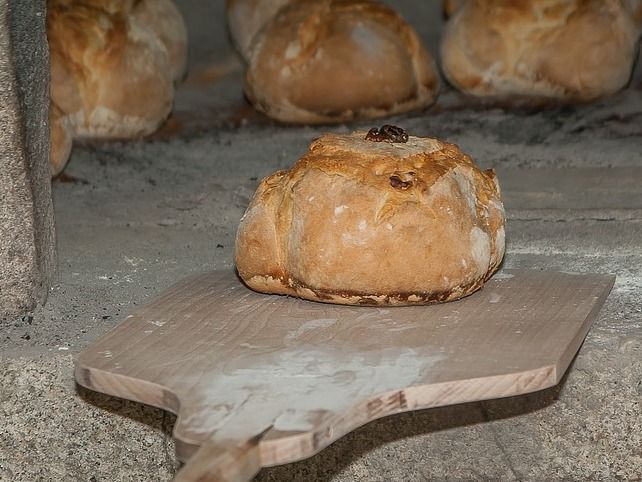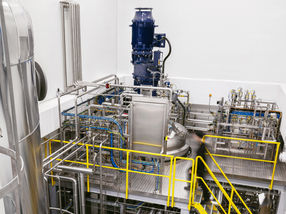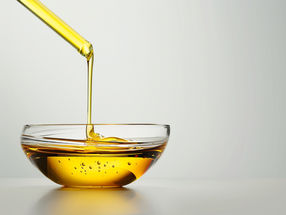Combining cassava flour in the bread dough might assure access to food in the future
With the perspective of climate change affecting wheat crops on a global scale, scientists from Brazil and Denmark test techniques to develop bread comprised by three-tenths of cassava while preserving its standard features.

jackmac34/ Pixabay
In coming decades, the rise in global temperatures owing to climate change may hinder the production of wheat in many temperate regions where the crop is grown today. The raw material for bread, one of the world's most consumed foods, may become scarce and more expensive as a result.
Cassava flour could partially replace wheat flour in bread, particularly in Africa and Latin America, but its baking properties are poor compared with those of wheat flour, according to experts.
To surmount this limitation, in recent years, the project entitled "Bread and meat for the future" performed a series of studies designed to use enzymes to improve the baking properties of cassava flour in breadmaking.
"Cassava flour contains more starch and less protein, including gluten. Also, it absorbs more water. All these factors probably explain its relatively poor baking properties," explains danish researcher Leif Horsfeld Skibsted, a professor in the Food Science Department of the University of Copenhagen. He is one of the principal investigators of the Project, which is supported by São Paulo Research Foundation - FAPESP and Innovation Fund Denmark through an agreement between the two institutions .
During an August event at FAPESP's headquarters that celebrated outcomes of its cooperation with Danish agencies, Skibsted presented some results of the studies performed with colleagues at Aarhus University and Danish companies Easy Foods and Novozymes. "The purpose of the project was to find out whether cassava flour could be used in the sustainable production of bread," he said.
The researchers began by estimating the extent to which cassava flour could substitute for wheat flour in the composition of a loaf of bread without impairing sensory properties such as texture, aroma, flavor, and color in comparison with bread made only with wheat flour.
The results of the analysis, detailed in an article published in the journal LWT - Food Science and Technology, indicated that depending on the type, cassava flour could replace between 20% and 30% of the wheat flour typically used to make bread without significantly altering its sensory characteristics and without impairing the leavening process that makes the dough rise.
"Above the 30% limit, the appearance, texture, and taste of bread made with a mixture of wheat and cassava flour start to display differences compared with bread made with wheat flour alone," Skibsted said.
Enzymatic enhancement
However, cassava flour did affect properties of the dough such as viscosity and retrogradation (crystallization of starch molecules) after cooling, both of which increased compared with wheat only.
According to Skibsted, this may have been due to lack of gluten, differences in the composition of the starch fraction in cassava flour compared with wheat flour, and limited activity of the enzyme amylase in cassava flour.
To see if these adverse effects of cassava flour could be attenuated, the researchers tested whether the various enzymes used by the industry today would enhance the sensory properties and alter the structural characteristics of bread made with up to 30% cassava flour.
Baking enzymes are used by breadmakers to enhance volume, crust color and freshness, among other qualities, but hitherto had been tested only in wheat dough.
By fragmenting polysaccharides such as starch, alpha-amylase helps increase bread volume with the same amount of ingredients and enriches the color of the loaf. Amylase also breaks down starch into short dextrin chains (low-molecular-weight carbohydrate) to catalyze the action of yeast.
Xylanase increases loaf volume by improving the solubility of hemicellulose (another polysaccharide) in water. It helps bind water and dough to boost volume and produce a finer, more uniform crumb structure, Skibsted explained.
"Our goal was to test different enzymes in order to try to identify the best solution for the production of bread using cassava and wheat," he said.
In their first study, the researchers tested the effects of fungal and maltogenic alpha-amylase, xylanase, lipase, laccase (polyphenol oxidase) and glucose oxidase in bread made with wheat and 30% sour cassava starch, which without enzymes displays less volume, a coarser texture, and smaller crumb pores.
The results of the study, published in the journal European Food Research and Technology, showed that glucose oxidase had no effect on bread quality, while alpha-amylase clearly enhanced sensory characteristics and physical structure. Lipase increased loaf volume by ensuring better retention of carbon dioxide gas in dough, and laccase made the bread softer.
The best results, however, were obtained by using xylanase. "This enzyme enhanced loaf structure and texture by making the dough more malleable," Skibsted said.
In a later study, also published in European Food Research and Technology, the researchers evaluated the individual and combined effects of the addition of water with xylanase and water with laccase on the quality of bread made with 70% wheat flour and 30% cassava flour.
Their analysis showed that an increase in added water combined with xylanase resulted in a loaf with more volume. "The bread was also softer and its structure more uniform," Skibsted said.
In another study published in the same journal, the researchers set out to see whether the components of wheat flour could activate enzymes to enhance the characteristics of bread in which cassava flour replaced part of the wheat flour. They found that an unknown heat-resistant element in wheat increased the activity of the xylanase.
"This finding opens up a prospect of using enzymes more rationally to enhance bread quality, especially when a combination of starch sources is used, as in the case of blends of wheat and cassava flour," Skibsted said.
































































